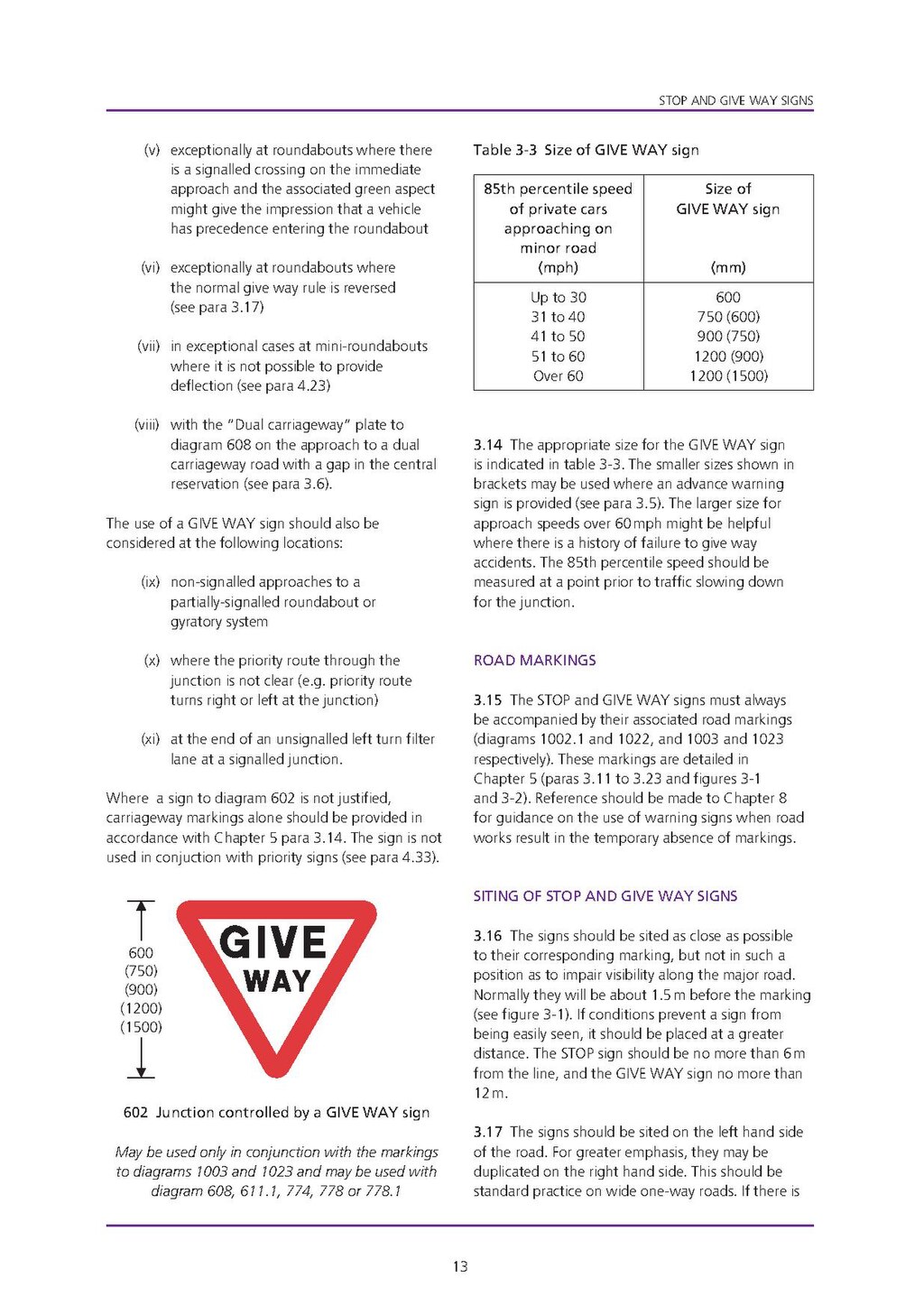(v) exceptionally at roundabouts where there is a signalled crossing on the immediate approach and the associated green aspect might give the impression that a vehicle has precedence entering the roundabout
(vi) exceptionally at roundabouts where the normal give way rule is reversed (see para 3.17)
(vii) in exceptional cases at mini-roundabouts where it is not possible to provide deflection (see para 4.23)
(viii) with the “Dual carriageway” plate to diagram 608 on the approach to a dual carriageway road with a gap in the central reservation (see para 3.6).
The use of a GIVE WAY sign should also be considered at the following locations:
(ix) non-signalled approaches to a partially-signalled roundabout or gyratory system
(x) where the priority route through the junction is not clear (e.g. priority route turns right or left at the junction)
(xi) at the end of an unsignalled left turn filter lane at a signalled junction.
Where a sign to diagram 602 is not justified, carriageway markings alone should be provided in accordance with Chapter 5 para 3.14. The sign is not used in conjuction with priority signs (see para 4.33).

602 Junction controller by a GIVE WAY sign
May be used only in conjunction with the markings to diagrams 1003 and 1023 and may be used with diagram 608, 611.1, 774, 778 or 778.1
| 85th percentile speed of private cars approaching on minor road | |
|---|---|
| Size of GIVE WAY sign | |
| (mph) | (mm) |
| Up to 30 | 600 |
| 31 to 40 | 750 (600) |
| 41 to 50 | 900 (750) |
| 51 to 60 | 1200 (900) |
| Over 60 | 1200 (1500) |
3.14 The appropriate size for the GIVE WAY sign is indicated in table 3-3. The smaller sizes shown in brackets may be used where an advance warning sign is provided (see para 3.5). The larger size for approach speeds over 60 mph might be helpful where there is a history of failure to give way accidents. The 85th percentile speed should be measured at a point prior to traffic slowing down for the junction.
ROAD MARKINGS
3.15 The STOP and GIVE WAY signs must always be accompanied by their associated road markings (diagrams 1002.1 and 1022, and 1003 and 1023 respectively). These markings are detailed in Chapter 5 (paras 3.11 to 3.23 and figures 3-1 and 3-2). Reference should be made to Chapter 8 for guidance on the use of warning signs when road works result in the temporary absence of markings.
SITING OF STOP AND GIVE WAY SIGNS
3.16 The signs should be sited as close as possible to their corresponding marking, but not in such a position as to impair visibility along the major road. Normally they will be about 1.5 m before the marking (see figure 3-1). If conditions prevent a sign from being easily seen, it should be placed at a greater distance. The STOP sign should be no more than 6 m from the line, and the GIVE WAY sign no more than 12 m.
3.17 The signs should be sited on the left hand side of the road. For greater emphasis, they may be duplicated on the right hand side. This should be standard practice on wide one-way roads. If there is
13
